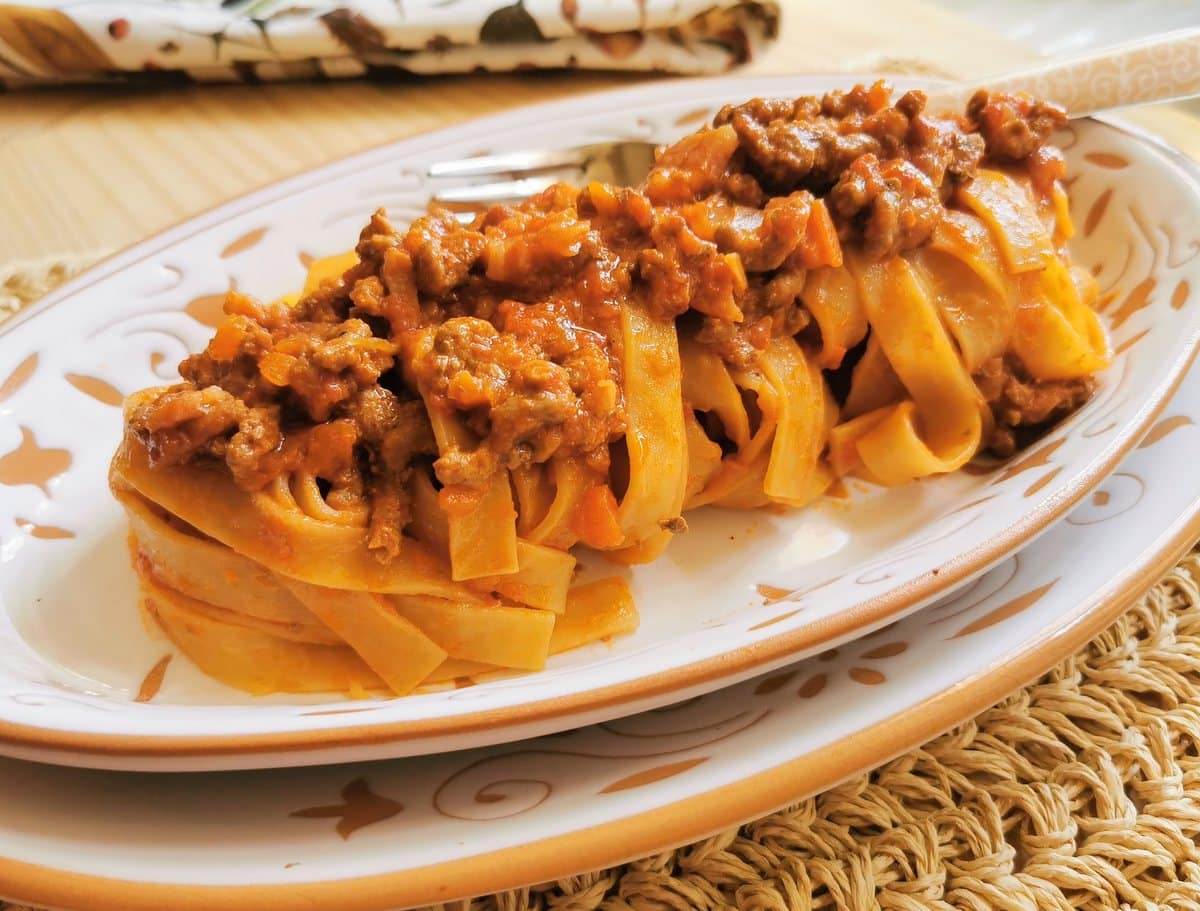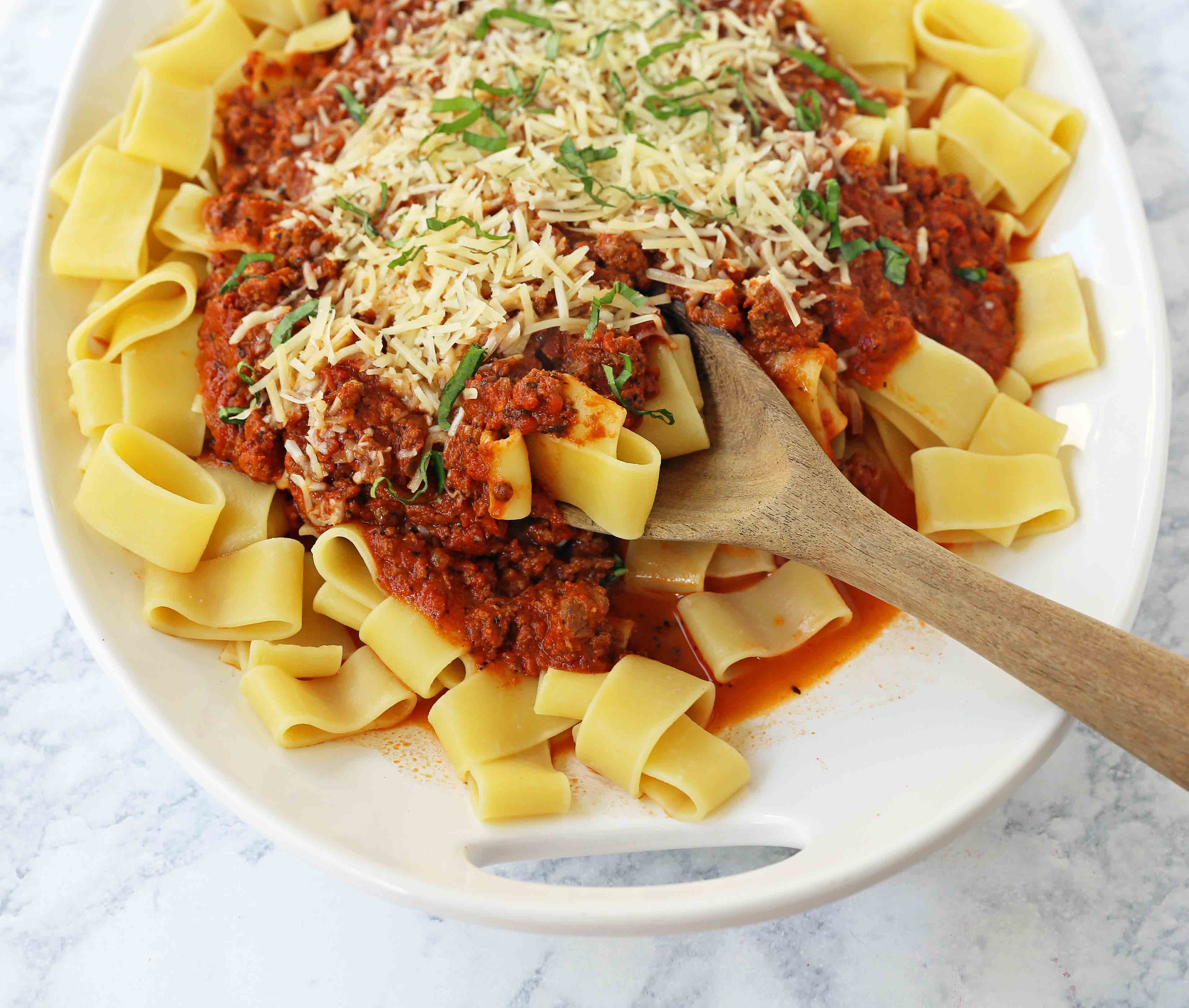Embark on a culinary journey through the heart of Italy with our exploration of the authentic Bolognese recipe. This beloved sauce, originating in the culinary capital of Bologna, has tantalized taste buds for centuries, evolving over time to become a cherished cornerstone of Italian cuisine.
Join us as we delve into the history, ingredients, and preparation techniques that define this culinary masterpiece, ensuring you can recreate the authentic flavors of Bologna in your own kitchen.
From its humble beginnings to its modern-day iterations, the Bolognese recipe has captivated generations with its rich, savory flavors. We’ll explore the traditional ingredients that give this sauce its distinctive character, discussing their roles in creating a harmonious balance of flavors and textures.
Get ready to master the art of sautéing, simmering, and reducing, as we guide you through the step-by-step process of crafting the perfect Bolognese sauce.
History and Origin
Bolognese sauce, also known as ragù alla bolognese, is a rich, hearty meat sauce that originated in the city of Bologna, Italy. Its roots can be traced back to the 15th century, where it was known as “ragù di carne” (meat ragout).
The recipe for Bolognese sauce has evolved over time, but its core ingredients remain the same: ground beef, pork, and veal; tomatoes; onions; carrots; celery; and red wine. The sauce is typically simmered for several hours, allowing the flavors to meld and develop.
The Evolution of Bolognese Sauce
- 15th Century: Known as “ragù di carne,” the sauce was made with a variety of meats, including beef, pork, and veal. It was typically served with pasta or polenta.
- 18th Century: Tomatoes were added to the sauce, giving it its characteristic red color. The sauce also became more refined, with the addition of herbs and spices.
- 19th Century: The sauce became known as “ragù alla bolognese” and was considered a staple of Italian cuisine. It was often served with tagliatelle pasta.
- 20th Century: Bolognese sauce became popular around the world and is now a beloved dish in many countries.
Traditional Ingredients
An authentic Bolognese sauce relies on a carefully curated blend of ingredients that contribute to its distinctive flavor and texture. Let’s explore the essential components:
- Ground beef and pork: These meats provide the base of the sauce, offering richness and depth of flavor. Traditionally, a combination of ground beef and pork is used, with some recipes also incorporating ground veal.
- Pancetta or guanciale: These cured pork products add a salty, umami flavor to the sauce. Pancetta is made from the pork belly, while guanciale is made from the pig’s cheek. Both impart a rich, savory taste.
- Onion, carrot, and celery: This aromatic trio, known as a “soffritto,” provides a sweet and savory base for the sauce. The vegetables are finely diced and sautéed slowly to release their flavors.
- Tomatoes: Tomatoes contribute acidity and sweetness to the sauce. Traditionally, canned whole tomatoes are used, which are crushed by hand to create a rustic texture.
- Milk or cream: A splash of milk or cream is often added towards the end of cooking to enhance the richness and velvety texture of the sauce.
- Red wine: Red wine adds depth and complexity to the sauce. It is typically used in small quantities to deglaze the pan and enhance the flavors.
- Seasonings: Salt, pepper, nutmeg, and bay leaves are essential seasonings that round out the flavor profile of the sauce.
Variations in Ingredients
While the core ingredients remain the same, regional variations in Bolognese sauce exist. For example, in the Emilia-Romagna region, where the sauce originated, it is common to use a higher proportion of pork than beef. In other areas, such as Tuscany, Chianti wine may be used instead of red wine.
Step-by-Step Preparation
Preparing Bolognese sauce is a labor of love that requires patience and attention to detail. Here’s a comprehensive guide to help you achieve the perfect sauce:
Sautéing the Mirepoix
- In a large pot or Dutch oven over medium heat, heat some olive oil.
- Add the finely chopped onions, carrots, and celery and sauté until softened, about 5-7 minutes.
Browning the Meat
- Add the ground beef and pork to the pot and brown it, breaking it up with a wooden spoon.
- Cook until the meat is no longer pink, about 5-7 minutes.
Adding the Wine
- Pour in the red wine and let it simmer until reduced by half, about 5 minutes.
- This will enhance the sauce’s flavor and depth.
Adding the Stock
- Gradually add the beef stock to the pot, stirring constantly.
- Bring to a boil, then reduce heat and simmer for at least 2 hours, or up to 4 hours for a richer flavor.
Adding the Tomato Paste
- Stir in the tomato paste and cook for 5-7 minutes, or until it darkens in color.
- This will add a concentrated tomato flavor to the sauce.
Adding the Milk
- Pour in the milk and stir to combine.
- This will help to balance the acidity of the tomatoes and create a creamier texture.
Seasoning the Sauce
- Add salt, pepper, and any other desired spices to taste.
- Taste the sauce and adjust the seasonings as needed.
Simmering and Reducing
- Continue to simmer the sauce for at least 30 minutes, or up to 2 hours.
- This will allow the flavors to meld and the sauce to thicken and reduce.
Pairing and Serving Suggestions

Bolognese sauce is a versatile dish that can be paired with a variety of sides and served in various ways. Here are some suggestions for enhancing your Bolognese experience:
Pasta is the traditional accompaniment to Bolognese sauce, and there are several types that pair exceptionally well. Pappardelle, with its wide, flat ribbons, provides a generous surface for the sauce to cling to. Tagliatelle, another popular choice, offers a similar experience with its long, narrow ribbons.
For a more rustic touch, try pappardelle or tagliatelle made with whole wheat flour.
Innovative Presentation Ideas
- Polenta Cakes: Spread the Bolognese sauce over crispy polenta cakes for a delightful combination of textures.
- Stuffed Shells: Fill jumbo pasta shells with the sauce, top with cheese, and bake for a comforting and elegant presentation.
- Lasagna Roll-Ups: Layer the sauce with lasagna noodles, cheese, and vegetables, then roll up and bake for a hearty and visually appealing dish.
Variations and Adaptations
The classic Bolognese sauce is a versatile dish that can be adapted to personal preferences and regional variations. Here are some popular variations:
Regional Variations
- Bolognese alla Bolognese: The original recipe from Bologna, Italy, uses a combination of ground beef, pork, and veal, along with a generous amount of vegetables.
- Bolognese alla Napoletana: A variation from Naples uses a mix of ground beef and pork, with the addition of mushrooms and green olives.
- Bolognese alla Toscana: This Tuscan version includes ground pork, beef, and sausage, along with a hint of rosemary and red wine.
Modern Interpretations
- Vegetarian Bolognese: This plant-based variation uses a combination of lentils, mushrooms, and vegetables to create a meatless sauce.
- Gluten-Free Bolognese: For those with gluten sensitivities, this variation uses gluten-free pasta and a roux made with rice flour or cornstarch.
- Lightened Bolognese: A healthier version that reduces the amount of fat and calories by using lean ground turkey or chicken, and incorporating more vegetables.
Customizing to Personal Preferences
You can further customize the Bolognese sauce to your liking by adjusting the following elements:
- Meat: Use different combinations of ground beef, pork, veal, or turkey, or experiment with other meats like lamb or venison.
- Vegetables: Add or remove vegetables like carrots, celery, onions, bell peppers, or mushrooms.
- Liquids: Use a combination of red wine, beef broth, or milk to create a richer flavor.
- Seasonings: Experiment with different herbs and spices, such as oregano, basil, thyme, rosemary, or red pepper flakes.
Health Benefits
Bolognese sauce is not only delicious but also packed with nutrients. It is a good source of protein, vitamins, and minerals.
The meat in the sauce provides protein, which is essential for building and repairing tissues. The tomatoes are a good source of vitamins A and C, which are important for immune function and skin health. The onions and garlic contain antioxidants, which can help protect cells from damage.
The celery and carrots add fiber, which is important for digestive health.
Making Healthier Versions
There are a few ways to make Bolognese sauce healthier. One way is to use leaner ground beef. Another way is to add more vegetables to the sauce. You can also reduce the amount of salt and sugar in the sauce.
Last Point

As we conclude our exploration of the authentic Bolognese recipe, we hope you feel inspired to bring the flavors of Italy into your own kitchen. Whether you’re a seasoned chef or a culinary novice, this timeless recipe offers a rewarding challenge and a delicious outcome.
Experiment with regional variations and modern interpretations, customizing the sauce to your personal preferences. Remember, the true essence of Bolognese lies in its ability to bring people together around a shared love of good food. So gather your loved ones, prepare your ingredients, and let the aromas of this culinary masterpiece fill your home.
FAQ
Is it possible to make a vegetarian version of Bolognese sauce?
Absolutely! You can create a delicious vegetarian Bolognese by substituting lentils or mushrooms for the ground beef. These plant-based alternatives provide a rich, savory flavor that complements the other ingredients beautifully.
What is the secret to achieving the perfect consistency in Bolognese sauce?
Patience is key! Simmer the sauce for several hours, allowing the flavors to meld and deepen. Stir occasionally to prevent burning and to ensure an even consistency throughout.
Can I use different types of pasta with Bolognese sauce?
Yes, while tagliatelle is the traditional pasta paired with Bolognese, feel free to experiment with other shapes such as pappardelle, rigatoni, or penne. Each type of pasta offers a unique texture and surface area, allowing the sauce to coat and adhere differently.
